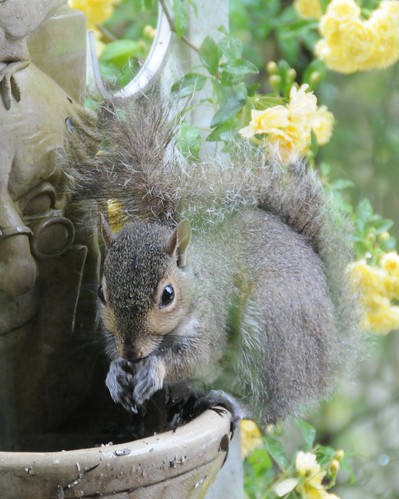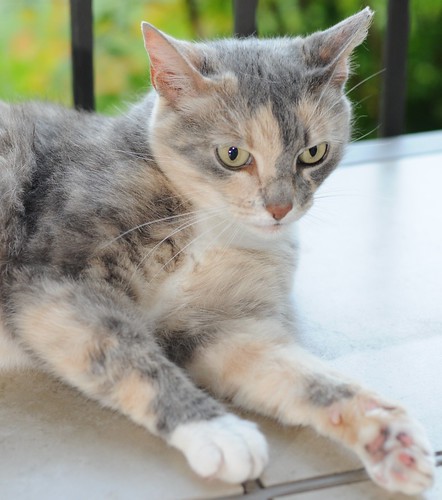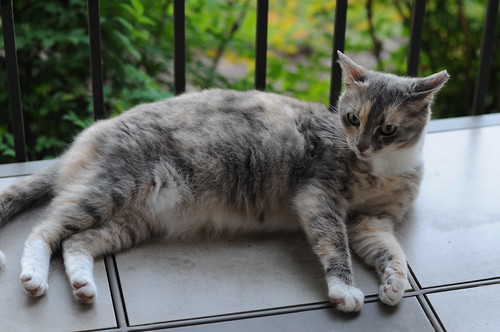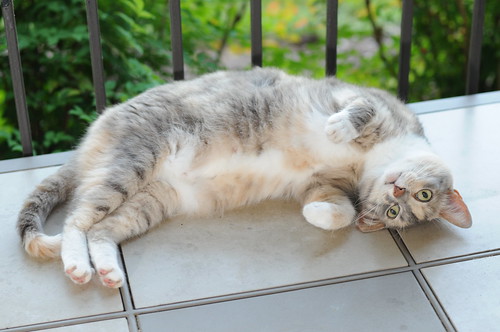 |
| 170mm, ISO 200, f/5.6, 1/25th of sec, ambient light only |
At its very core, it means to always have your camera nearby, whenever possible. In other words, carry your camera with you! What good is it if you leave it at home? You can have a $5,000 Nikon camera, and if you don't have it when an awesome picture is just waiting to be captured, what good is it? I'd rather have a $200 camera in my pocket in that case.
Everyone has a cell phone with a camera nowadays. Granted, there are some out there that are better than others...but for the most part, the quality of the pictures they produce cannot compare with those of a basic point and shoot camera with a zoom lens. So when I say, 'Take Your Camera With You', you can't cheat and say..."well, I've got my phone!". Save your smartphone for the selfies (click here if don't know what a selfie is) and birthday party snapshots.
I use my smartphone camera all the time for snapshots, and it's great for just that...snapshots. It's wonderfully quick for taking a quick shot of our little boy, my wife, or one of the pussy cats and then posting it on Twitter or Facebook. I mean, it couldn't be easier right?
But Camerawith! is referring to something deeper. Everyone has an artistic side of themselves, and for you and I (I say you because you are reading a blog about photography) our outlet/release for our artistic ability is thru taking photographs. Photography is an art at its very core, and this challenge is designed to get you open your eyes and see the world around you. Then, when you happen across something outside of the ordinary, spend that extra few minutes to get out your camera and capture that moment.
And this part is KEY...when you have your camera with you, you will begin to look for and seek out things you can capture that on an ordinary day you would walk right past. It's like when you got a Nerf gun as kid, what do you do?? You look for things to shoot at. Same thing. Simply by taking your camera with you, your eyes will open up. How neat.
Do you know what this challenge will do for you if you take it on? It will make you a happier person. It will UP your level of satisfaction...that feel-good-but-don't-know-why feeling. With all the craziness in the world and negative things in this life that tries to consume every bit of your time, we all need a little intentional positive reinforcement. Essentially, all I'm encouraging you to do is "stop and smell the roses"...but instead of smell them, photograph them. If you will take just 5 minutes out of your day (that's less than half of one percent by the way) and photograph something that stands out to you, it will force your level of contentment to rise...I promise you. Your life-appreciation will begin to increase.
So, which is the best camera to 'take with you'? That's easy. The one you will use! If you are not comfortable with a DSLR (the type of camera with interchangeable lenses), the next best thing is a point-and-shoot camera that you can put in manual mode (click here for my post on shooting in manual mode...It'll open the door to a whole new world). But seriously...the best camera is the one you will actually use. (I will touch on a few examples of some of the more inexpensive cameras I recommend in a later post if you are interested.)
Note the little squirrel up top. He is just helping himself to some bird seed, shamelessly. It tears my father up when he looks outside and finds the squirrels stealing the birds' food that he takes time to put out every day. It makes me laugh to look at this photograph. It brings me to a happy place in my mind and makes me focus on my parent's home more than the actual squirrel. If I had of forgotten my camera that day when we went to go see them, I wouldn't have captured this image and this brief little nugget of happiness would have escaped.
Camerawith! ...Take Your Camera With You. Accept the challenge and go out and shoot something meaningful to you today.
Thanks for reading!
Brant





